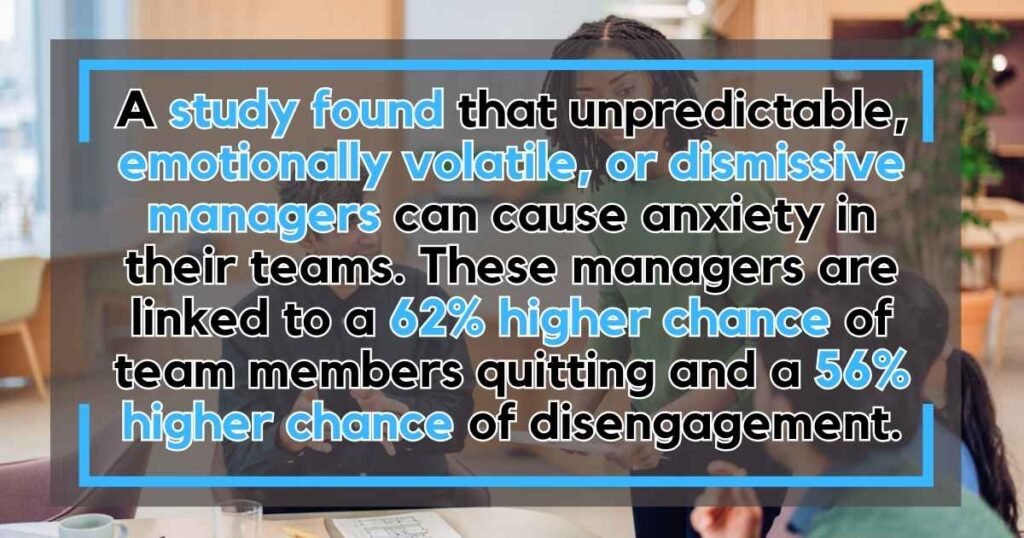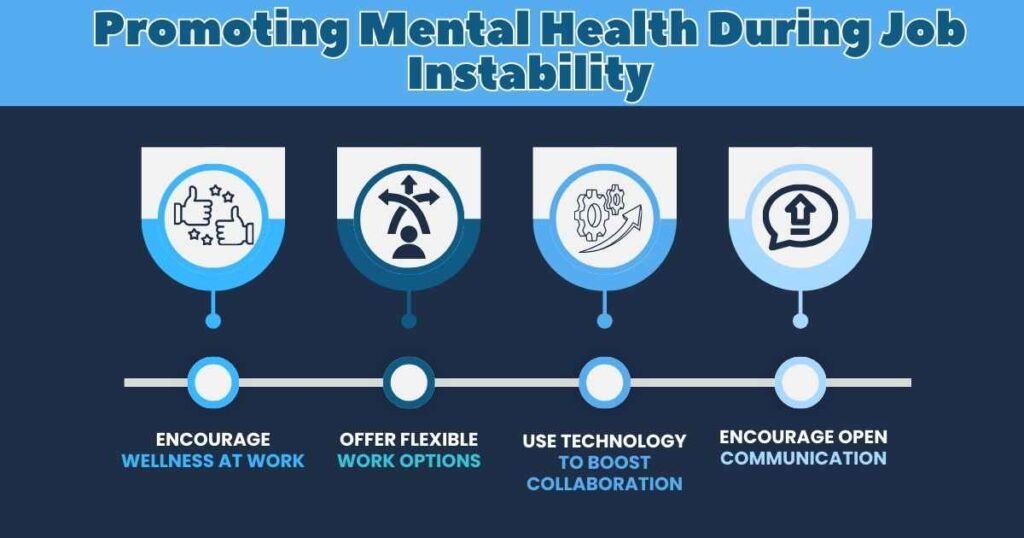Many workers remain dissatisfied with how employers manage stress, even when wellness benefits are offered.
According to a survey by the recruitment firm Robert Walters, involving 2,500 business professionals, job insecurity accounts for approximately 45% of employee stress. This underscores the importance for leaders to address this issue to retain talented staff.
The survey further revealed that many professionals believe senior leaders and HR departments should take responsibility for managing workplace stress. Addressing employees’ concerns and identifying the primary causes of their stress are essential for fostering a positive work environment and effectively managing stress levels.
How Job Instability Impacts Worker Stress

Job instability refers to the feeling of insecurity and demotivation that arises when individuals worry about losing their jobs. This concern may be temporary, such as during times of layoffs or terminations, or it may persist as a chronic sense of insecurity.
The constant worry about future employment can lead individuals to experience precarious job situations throughout their careers. This often results in uncertainty about the future success of their firm or personal achievements, particularly in industries prone to frequent layoffs.
- Effects on Employee Stress
Job instability significantly impacts worker stress, particularly in the finance and accounting sectors. A survey conducted by Randstad, an HR services and staffing company, revealed that professionals in these fields generally show lower levels of concern about job security threats like layoffs and pay cuts.
The survey also found that these employees are less likely to make sacrifices to protect their jobs, such as forgoing vacation time, working longer hours without additional pay, or relocating.
- Behavioral Consequences
Persistent job instability can lead to negative behaviors and coping mechanisms. This insecurity not only affects emotional well-being but also hinders positive actions. Instead of building work-related connections and skills to mitigate job insecurity, individuals may withdraw from work relationships, which can be important for social support.
This withdrawal can lead to feelings of loneliness and isolation, further exacerbating the stress associated with job instability and potentially hindering opportunities for career advancement or new employment.
Leading with Resilience

Managers have been guiding their teams through recent challenges, but their own mental health has suffered, affecting the entire organization. Stress among managers can impact their employees, leading to reduced well-being and performance.
A study found that managers who are unpredictable, emotionally volatile, excessively negative, or dismissive of employee feelings can cause anxiety in their teams. Such managers are linked to a 62% higher likelihood of their team members quitting and a 56% higher chance of disengagement from work.
While workplace stress is unavoidable, how leaders manage it is important for protecting their team’s mental health. Implementing strategies to reduce their own stress not only creates capable leaders but also strong advocates for their employees’ well-being.
Promoting Mental Health During Job Instability

Managing and reducing job-related stress in the accounting and finance sectors is important. While a little stress can be motivating, too much can lead to burnout and hurt employee well-being. It’s important to find a balance to maintain productivity and teamwork.
Here are some simple strategies to reduce workplace stress:
- Encourage Wellness at Work
Promote activities that help employees stay healthy and positive, such as offering wellness programs, fitness challenges, or mindfulness sessions. When employees focus on their well-being, they are better equipped to handle stress and stay productive.
- Offer Flexible Work Options
Consider long-term work models like remote, hybrid, or in-office setups. Flexible work arrangements help keep talented employees and cater to their unique needs, making it easier for them to balance work and personal life, which can reduce stress and improve job satisfaction.
- Use Technology to Boost Collaboration
Foster a work culture that values teamwork and communication by using collaboration tools like video conferencing, chat apps, and project management software. Feeling isolated can increase stress, so using technology to keep everyone connected can help reduce it and ensure that team members feel part of a cohesive unit.
- Encourage Open Communication
Create an environment where employees feel safe sharing their concerns by promoting a culture of honesty and empathy. Encourage open communication channels where employees can express their needs and feel supported, whether through regular check-ins, anonymous feedback systems, or open-door policies. This helps build trust and ensures that issues can be addressed before they escalate.
Final Thoughts
Managing stress and job insecurity is a major challenge for employers, even with wellness programs. Leaders in corporate finance should focus on people and technology to achieve success. To create a positive work environment, it’s important to address the causes of employee stress, such as job insecurity, which can lead to low morale and burnout.
Companies can reduce stress by promoting wellness programs, offering flexible work options, using technology to improve collaboration, and encouraging open communication. In 2024, finance and accounting teams should embrace trends like automation, AI, upskilling, remote work, and new technologies. As businesses expand globally, accounting departments must also adhere to international standards and regulations.
FAQs
Why does job instability cause stress for workers?
Job instability leads to stress because it creates uncertainty about the future. Employees may worry about losing their income and job security, which can affect their mental well-being and focus at work.
How does job instability impact employee morale?
Job instability can lower employee morale, making workers feel less engaged and motivated. This often leads to decreased productivity and a less positive work environment, as employees may worry more about job security than their tasks.
What are signs that job instability is causing stress?
Signs of stress from job instability include higher absenteeism, lower productivity, and increased workplace conflicts. Employees might also show signs of burnout, such as tiredness and irritability, and there may be higher turnover rates as they look for more stable jobs.
How can employers reduce stress from job instability?
Employers can help reduce stress by being transparent about job security, offering support like counseling services, and creating a positive work environment. Flexible work options and wellness programs can also help employees manage stress and maintain a good work-life balance.
